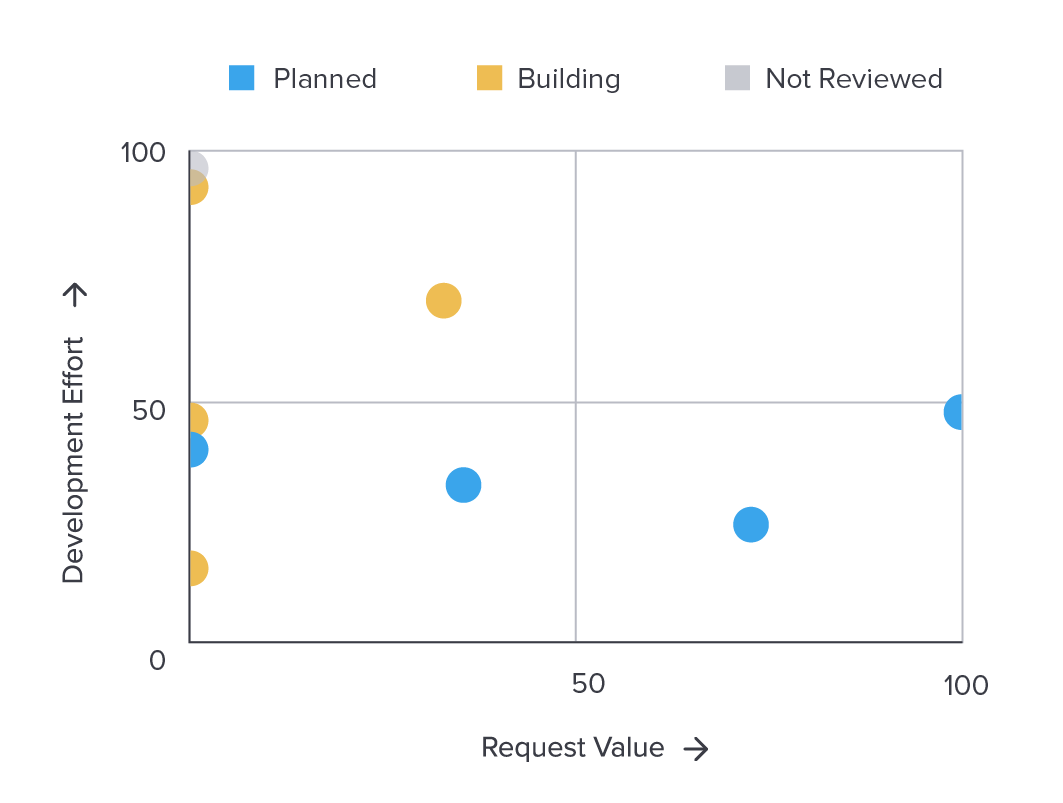9 things you can do to be more customer-centric in the age of COVID-19
It’s a strange new world. New customer acquisition has slowed, expansion projects are on pause, and companies are re-balancing their efforts to secure their installed base. The direction from the c-suite is clear: “Harden the base! Protect the core! Keep them happy, sell them more!” The ‘how’ to achieve those results? Less clear…but this post has you covered. Here, we’ve detailed the best UX patterns, user communications, and practical tactics to reach your customers and serve them better today so you can come out of this downturn ready to take advantage of the recovery.
#1 – Create a customer communications hub
There’s a lot you need to say to your users, but traditional channels are noisier than ever. Email is bankrupt, and the only reliable way to reach your users at scale is with in-app messaging. It’s critical that you provide one central place where messages live — like a “Resource Center” or guide library. This way, customers will know where to go when they need information, and can put it aside when they need to focus.
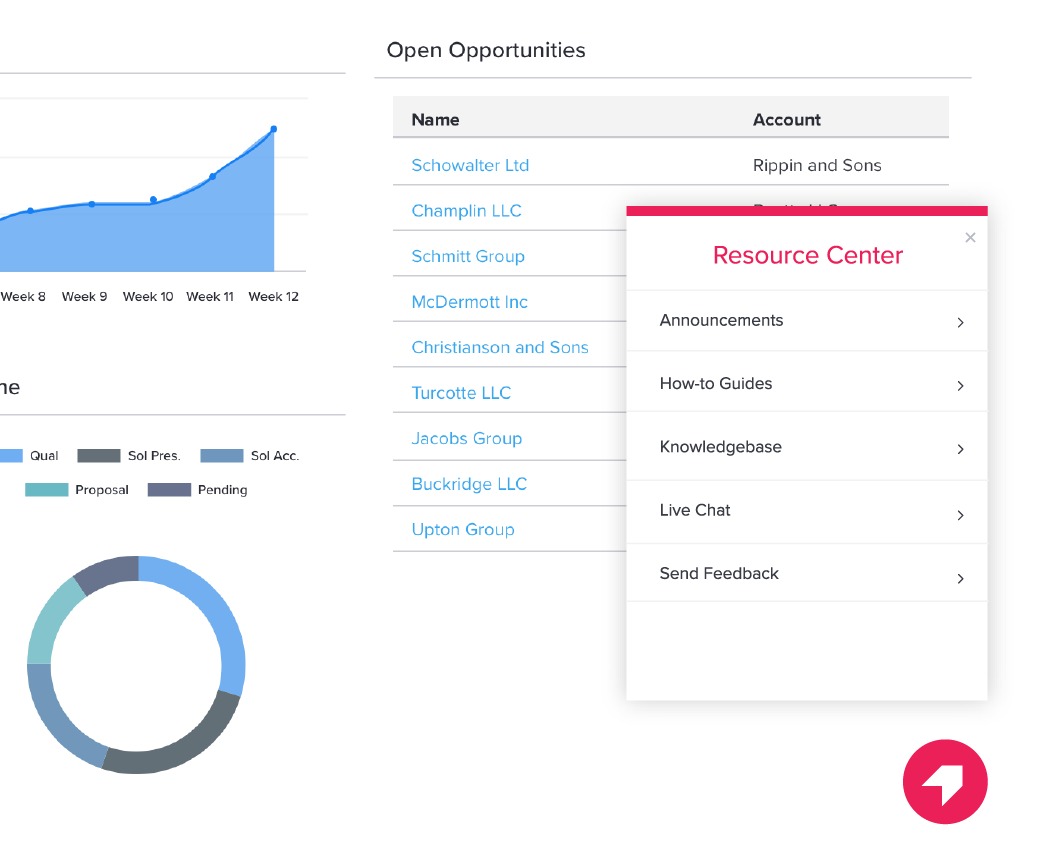
Pro tip: you can also add live chat, help desk, knowledge base, or customer feedback capabilities to your product to encourage engagement and dialog with your customers, rather than just one-way announcements.
#2 – Remind users how you can help them today
Highlight parts of your app that are most valuable in this new distributed work environment. That could be a feature that helps your customers better communicate with their customers, improves efficiency, or enables a new channel for revenue. Whatever it is, make sure customers know how they get value so they see you as a valued partner vs an expendable vendor.
Pro tip: Consider unlocking a ‘premium’ feature for all users. You can monitor usage to find your most enthusiastic adopters, and when buying cycles start to normalize, approach them with offers to upgrade to premium or paid plans.
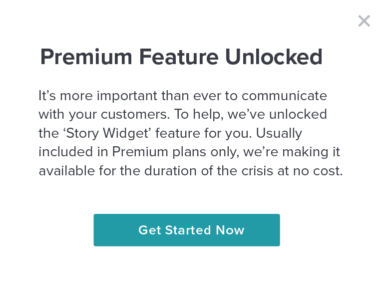
#3 – Drive more (virtual) face-to-face customer conversations
The distributed workforce can be isolating and disorienting, and the best antidote is a live human interaction, even via video chat. Whether you’re in a customer success role and want to promote facetime with your accounts, or you’re in product/UX and want to engage users in direct discovery, in-app guides are an effective way to drive more interactions. Add your Calendly link or an always-on Zoom room and hear firsthand from your customers how they’re doing and what they need from you.
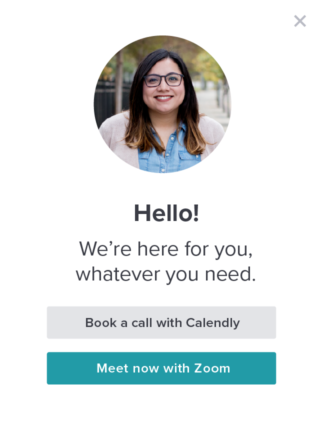
Pro tip: use segmentation, sampling, and throttling to make sure you’re reaching the right type of audience, encourage a steady flow of inbound requests, and ensure the offers are evenly distributed across your base.
#4 – Create “at a glance” customer usage dashboards and health scores
Your success team needs visible, accessible data to help prioritize which customers need the most intervention. Set up shared dashboards that show usage trends, feature requests, tickets, and other key data points along with baselines and trends to put those numbers in context. If you have an existing customer health score, use that as a segment for usage analysis and understand what behaviors drive healthy vs at risk customers.
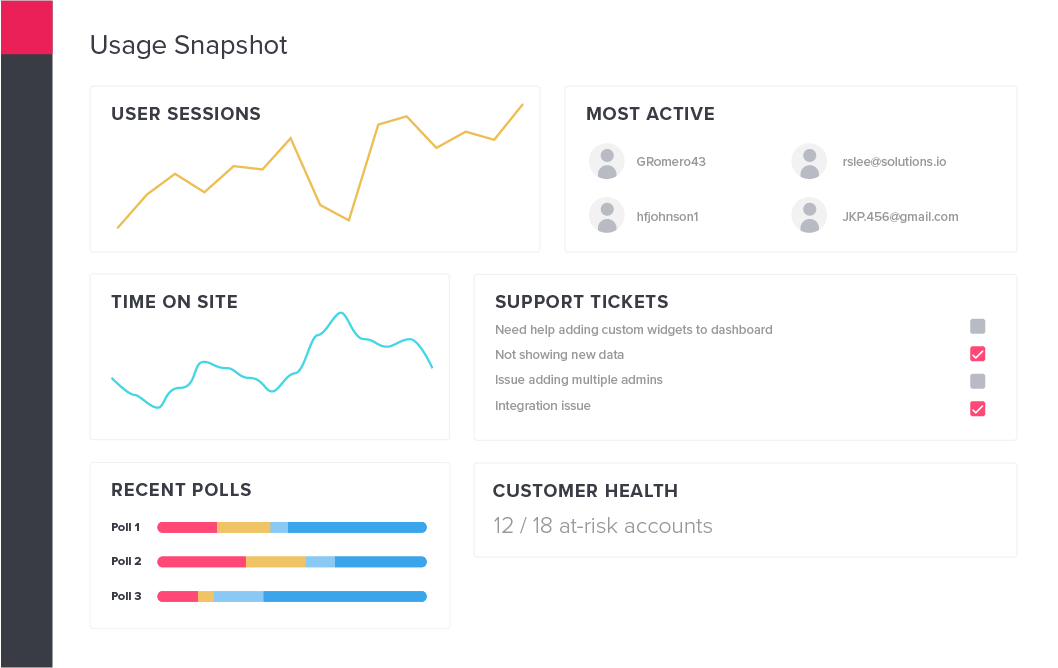
Pro tip: haven’t set up a health score yet? Check out Pendo’s recipe for a Breadth/Depth/Frequency (BDF) score to get started, and tweak for your business and user base.
#5 – Learn from retention and churn
Retention is more than “the new growth”, it’s the new everything. Compare the behaviors of users you’ve retained after their first week or month with users who drop off during that same period. Use this insight to identify key workflows that create “aha” moments and drive success with your product, and design outreach programs to re-engage dropped users.
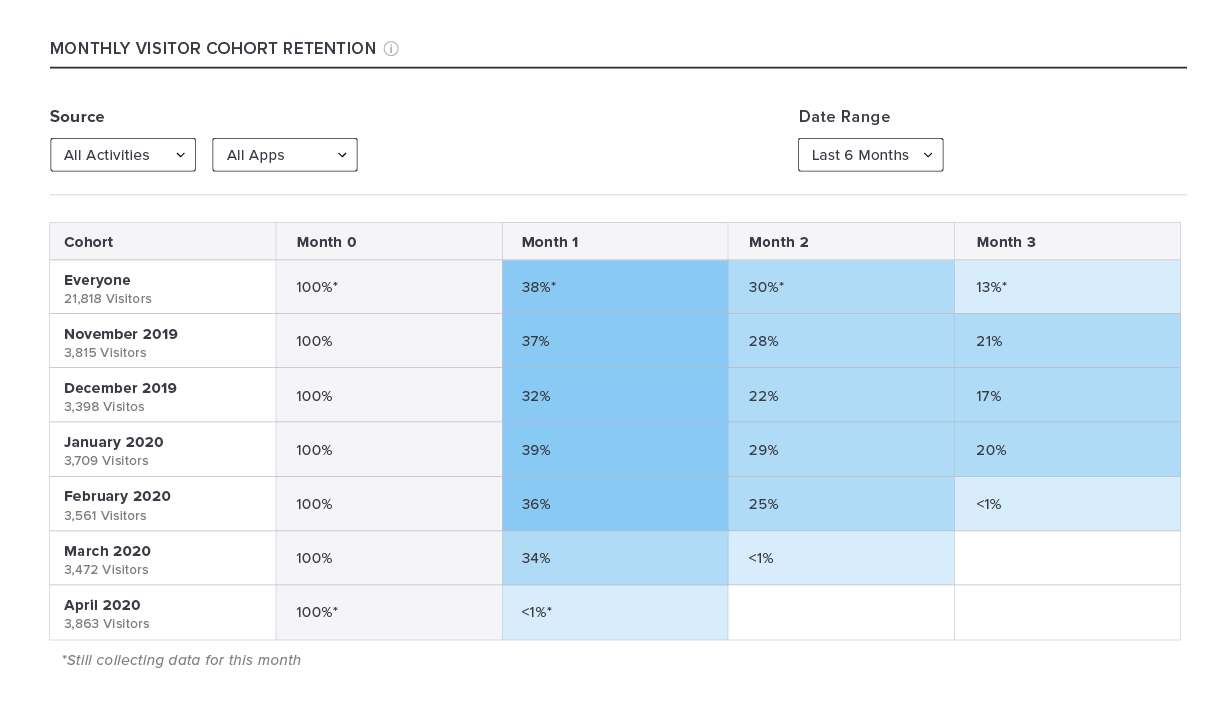
Pro tip: if you want to optimize your new user activation funnel, this is a great way to identify the actions and events that are likely to make users stick around.
#6 – Keep support channels clear with better in-app communications
When your customers need help and file a support ticket, nothing is more frustrating than slow response times and crowded phone lines. To keep your support channels operating at the level your users expect, use targeted in-app communications to deflect high-volume/low-value tickets. Grab a 10-minute sync with your head of support and ask what the biggest nuisance tickets are. Strategize proactive ways you can deploy in-app communications so customers know the recommended troubleshooting steps or how to deploy a workaround for the error.
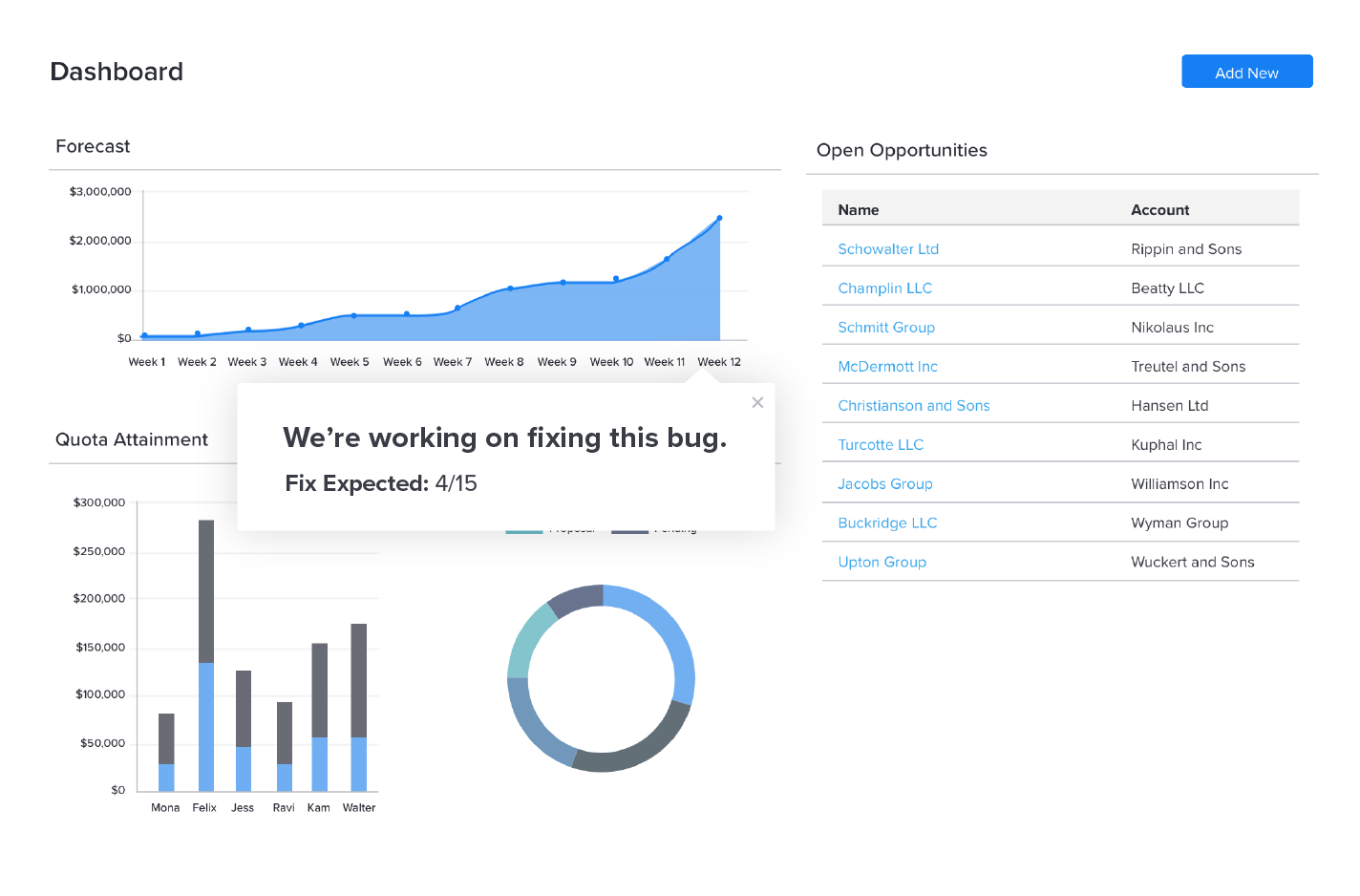
Pro tip: consider setting up notifications for identified bugs. It can be valuable to just alert users that the bug is known, you’re working on it, and the timeline for an expected fix to keep new tickets for known issues out of the queue.
#7 – Segment on sentiment
If you haven’t yet configured an in-app Net Promoter Score program, launch it today. By far, NPS has the largest impact relative to the effort required to run it. The trend of NPS score is a useful signal to understand how your customer base is doing and how their perception of your product’s value is changing over time, but you can also compare the behavior of Promoters and Detractors identified through your NPS program. Find the pages and features that are used more heavily by Detractors, and prioritize them for usability or customer research.

Pro tip: NPS verbatims are interesting both on the macro level (top level themes) and the micro. Ask Promoters to participate in webinars and testimonials. Have a process to reach out personally to Detractors to learn how you can help, or at least make them feel heard.
#8 – Double down on user research
It’s more important than ever to embrace agile, iterative development and engage direct customer feedback. Get customers involved in your product development process with in-app guides that drive dialogue with your users. This can be as simple as asking a poll question of users whether they prefer Feature A or Feature B, or asking an open text question about how a page could be improved. You can efficiently capture direct user input, build confidence on how you’re deploying engineering resources, and know you’re working on things that make a positive impact for your customers.
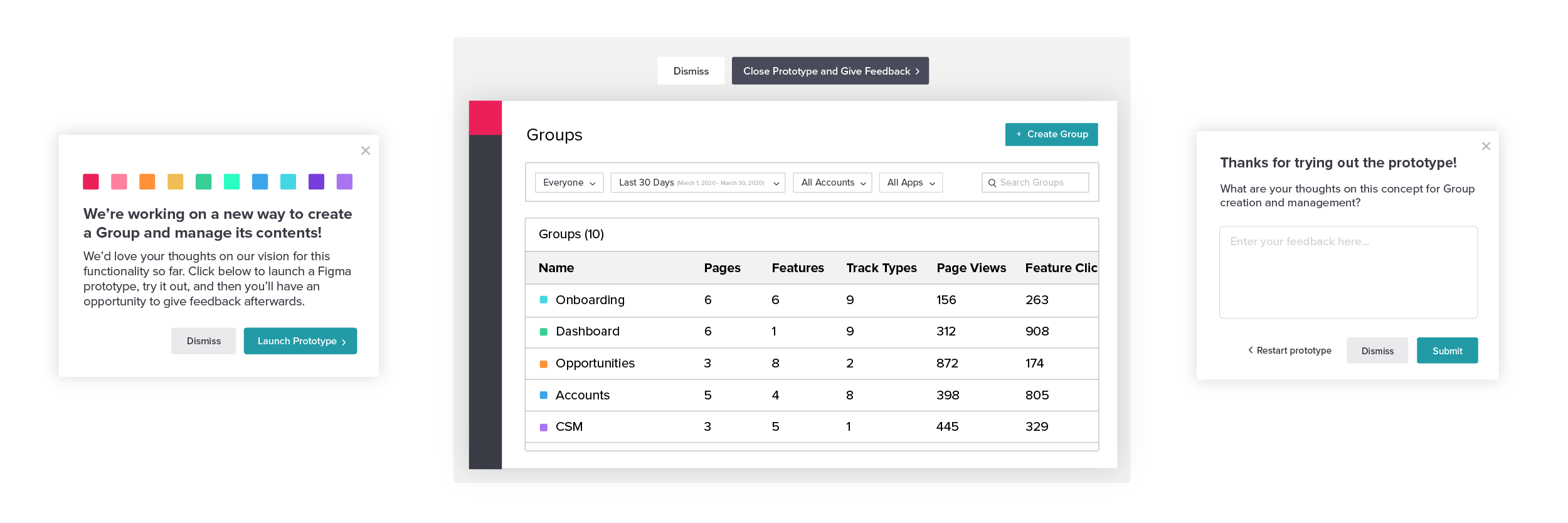
Pro tip: using Figma or Invision? Check out this recipe to embed prototypes in guides so you can get rapid validation of proposed features before you dedicate engineering resources.
#9 – Adjust your roadmap (using data) to deliver what matters for customers
It’s likely that your customers’ wallets may be frozen for the next two, three, six months (or more). The business imperative, once you’ve mitigated your near-term churn risk, is to make product investments that customers will be willing to pay for when business starts to normalize. Use your customer feedback portal to find feature requests that impact near-term customer needs, create value for at-risk customers, or address common themes from churned accounts.
Pro tip: One useful view is an ‘effort versus value’ matrix. Especially in this environment where conditions can rapidly shift, you don’t want to invest in projects that are going to take months to deliver even an MVP. Effort vs value will help identify low-hanging fruit that you can deliver quickly, adds immediate impact to your customers, while still supporting long-term goals.
